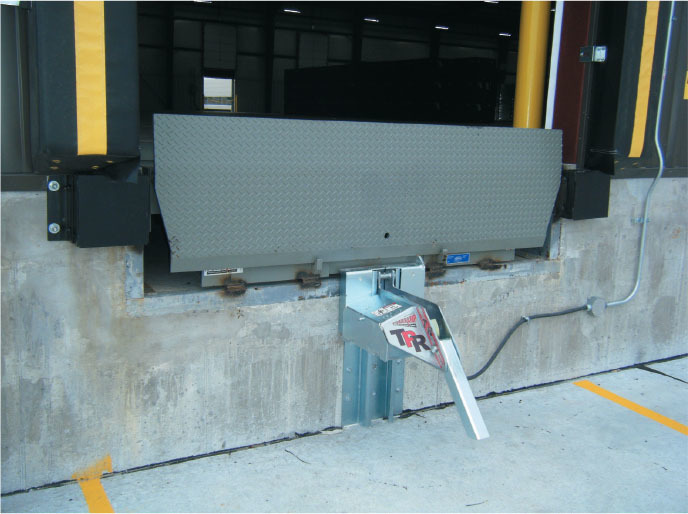SAFER HANDLING
BY TOM GRESHAM
The loading dock is a flashpoint for safety, with approximately 25% of warehouse accidents happening in the space, according to OSHA. That makes it essential for the material handling industry and every organization with a loading dock to prioritize loading dock safety.
“It’s important for us to do what we can to prevent those accidents and make the loading dock as safe as possible,” said Brett Lindstrom, director of marketing and connected experience for MHI member Systems Loading Dock Equipment and vice chairman of LODEM, MHI’s Industry Group for suppliers of loading dock equipment.
Adding to the safety challenges of the past, Gerard Biasutto, director of product management for MHI member Blue Giant Equipment Corporation and chairman of LODEM, noted that 24/7 transportation and delivery is leading to greater wear and tear on equipment and falling routine maintenance.
“Without monitoring usage and setting the proper planned maintenance schedule, the risk of an unscheduled breakdown can cause failure at the wrong times and requiring safety lockout of equipment, making it inoperable, which ultimately delays logistics of shipping/receiving,” Biasutto said. “We want to maximize productivity and reduce downtime. We’re navigating these challenges by labeling products with usage and digital controls that monitor the cycles for an expected alert of service with planned maintenance.”
Fortunately, an array of safety tools is being embraced in the loading dock space. For instance, Biasutto points to the critical advances of being able to interlock equipment with ease and the development of simple yet immediate communication to drivers outside and inside the loading dock. “These advances have helped reduce accidents by managing the trailer departure while personnel are inside the trailer,” Biasutto said.
In addition, Biasutto said securing the trailer to the dock bay with a trailer/vehicle restraint to avoid the trailer creeping away from the leveler—known as a dock walk—marks a vital safety trend in the field.
“This is important to avoid personnel injuries and dangerous loading dock separation accidents,” Biasutto said. “On top of that, OSHA outlines specific requirements aimed at preventing trailer/dock separation incidents.”
Lindstrom agreed that a sharp uptick in the acceptance of vehicle restraints at loading docks has been impactful.
“You’ve seen the demand in those restraints increase over the past decade as more and more end users have seen the value of enhancing that safety component,” Lindstrom said. “Companies have put an emphasis on safety and believe that the additional costs for restraints is worth it if it’s going to enhance safety at your loading dock.”
Lindstrom said the loading dock historically has been overlooked as a focus for tech solutions until recent years.
Click here to read the full article.
 MHI Solutions Improving Supply Chain Performance
MHI Solutions Improving Supply Chain Performance

